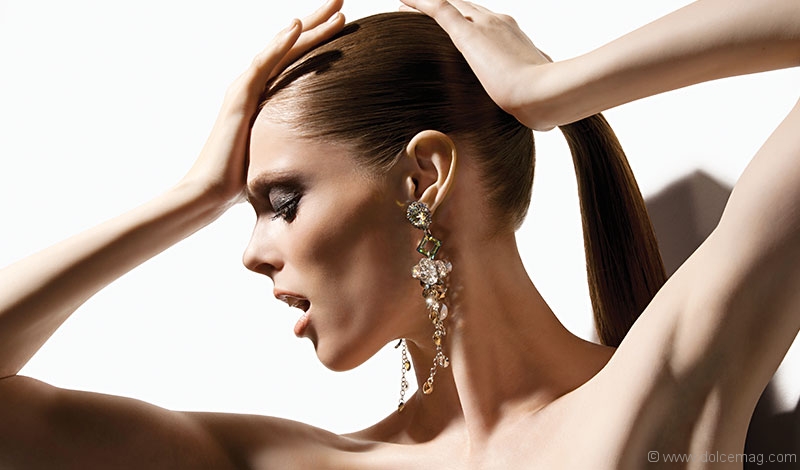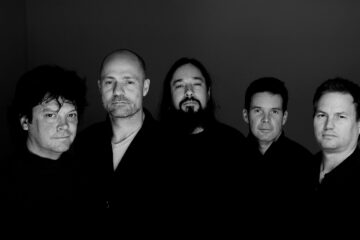Coco Rocha for Senhoa
DV: A chance conversation at your wedding in France led to Coco Rocha for Senhoa, what connected you to this cause?
CR: Children will always have a huge place in my heart. While I certainly believe in charities that help people of all ages, I think children, and especially orphans, are by far the most deserving of our charity and our time. An adult can often times pick themselves up and out of a desperate situation, but children depend on us to survive. The children the Senhoa program helps are as young as four-years-old. Can you imagine being that age, sold into slavery sometimes by your own parents? These girls have escaped a nightmare existence and I am so proud of the work Senhoa is doing. Human trafficking is a dark and scary topic and I find it’s often very hard for us to deal with the realities and atrocities of sexual exploitation. It can get so depressing that people just want to ‘switch off.’
DV: Tell me about the Senhoa philosophy.
CR: It’s Senhoa’s goal to engage people on the issue of human trafficking in a different way. My jewelry line is just one way they are doing that. I love Senhoa’s mission. Rather than just look for a handout to fund these girls’ day-to-day expenses, Senhoa actually provides them with a way to make a life for themselves. The younger girls are put into school and the girls 16 and older are offered a job making jewelry in a safe and secure environment, where they can gain economic independence.
DV: What changes would you like to see for young women growing up in Cambodia?
CR: Senhoa is a small group of 50-some girls in Cambodia who have been rescued from human trafficking. I know they hope to expand their program, but there are so many young women and men around the world, and even here in the Western world, who unfortunately live in that condition. I’d love to see a more open dialogue about the issue of human trafficking, not only in Cambodia but all around the world. We may not like to admit it, but it’s even a problem in countries like Canada and the U.S.
DV: Can you elaborate on the meaning of Coco Rocha for Senhoa’s slogan: Accessorize your Conscience?
CR: Often times, when we treat ourselves to some beautiful purchase, we feel a little guilty [having] spent that money. But with my Senhoa line, no one has a reason to feel bad for treating themselves or their loved one. All the money goes right back into this amazing program of helping and empowering women who really need it.
DV: Do you believe in altruism?
CR: Definitely! Being around charities like Senhoa and Lakay Pam, I’ve seen so many examples of people giving of their time and funds for no other reason than to improve the lives of those who they would ordinarily have no contact with. For all the horrible and bad things happening in the world, it’s comforting to know that there are those who want to and try to make things better.
DV: Letters to Haiti is a powerful film. What did you learn from capturing life in Haiti?
CR: I saw and experienced so much the week we were down there. I was moved by how appreciative the children were for any sort of love or attention you could give them. Even though they have lost so much, everything in fact, they still smile and take care of one another. It was heartwarming to see that. I was also struck by what I did not see. Other than a few old women trying to sweep piles of rubble and dust, I didn’t see any significant clean-up efforts. I can remember just two occasions where I witnessed construction and rebuilding, despite the fact that the entire country lies in rubble. If you asked the average person, I suspect they would think that the worst of Haiti’s troubles are over ¬– but they have only just begun.
DV: What reaction did you get from the kids after they read letters of hope and encouragement from strangers around the world?
CR: At first they seemed a little confused, but as they got to read the messages of hope and friendship, I think they were very touched. For many of them that was probably the first letter they ever received, and their only contact with the world outside of Haiti.
DV: How is your life like now as a new wife?
CR: Life is wonderful. Modelling can be a very lonely world: you’re often in a new city, working with new people every single week. Having James is such a comfort. If I’m going to be gone for more than three days, he always travels with me, which is amazing. [Staying] at a random hotel in Prague can still be a home away from home when he’s there, too.
DV: How did you know James Conran was the one?
CR: Growing up, I always worried that I’d have a hard time settling down, or that I might have second thoughts. With James, there was no question in my mind that I wanted to spend my life with him. Some friends have asked me how you know. As cliché as it sounds, when you know, you know. That’s all there is to it.
DV: What do you think the key is to a strong relationship?
CR: I wouldn’t say I have all the answers, or even any of them! I know I’m so lucky to have found a partner like James. We spend almost all our time together and somehow never get sick of one another. We talk all the time; share everything. I suppose the key to our relationship is not living separate lives. I don’t know how couples do it when they work in different cities or only cross paths every few weeks.
DV: Your schedule sounds absolutely chaotic, how do you manage your time? Under what circumstances do you say no?
CR: To be honest, I felt a little overworked in 2011, so it’s been James’ and my goal to not take on more than we can handle in 2012.
DV: What’s the best thing about being Canadian?
CR: For a model, it’s wonderful to be Canadian. Canada has been so supportive of me in my industry and they are so proud of their own. My friends who are American don’t have that – they get lost in the mix.
DV: You’ve done an incredible job of empowering and liberating women across the world, any idea as to what you’ll be campaigning for next?
CR: I think that the issue of empowering women is going to continue to need a lot of attention in the years to come. Also, speaking out for children who can’t speak out for themselves will always be a big passion of mine. This next year I’m looking at ways to help the younger girls in my industry, the new models with an exciting new venture called “The Model Alliance.” We officially begin in a few weeks!
Photography by: Nigel Barker














































































No Comment